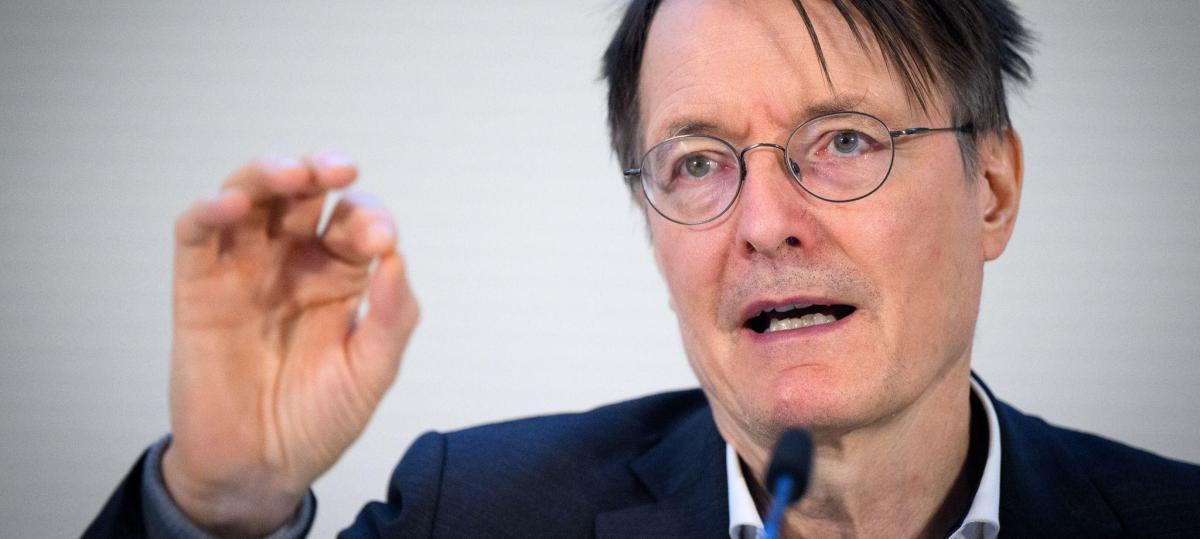NATO countries are convinced to spend more with a classic-Ruttian trick
:format(webp)/s3/static.nrc.nl/wp-content/uploads/2025/04/19185255/data131036096-7193cf.jpg)
With only six weeks to go until the NATO summit in The Hague (24 and 25 June), the tension in the alliance on future defense spending is increasing. There is a towering American requirement on the table to increase the NATO standard to 5 percent. Some European countries should not think about that, but for the US, European defense spending is the most important topic on the agenda in The Hague.
To streamline the discussion, Secretary-General Mark Rutte has a ‘scoping paper‘put on the table. Defense spending must rise from 2 percent of the gross domestic product to 5 percent annually. 3.5 percent of this must be spent on traditional defense expenditure, 1.5 percent may be spent on preconditions such as improving the infrastructure.
The proposal is a classic-Ruttian trick, although he does not want to talk about the figures in public. Soldiers say they need around 3.5 percent to be able to implement the plans for the defense of the NATO territory. Trump had demanded 5 percent and a number of southern European countries wanted to alleviate the burden by improving infrastructure or cyber protection as defense expenditure. Now Trump gets his target, the military planners get what they need and southern European countries, who already wanted to use part of the expenditure for preconditions at a guideline of 3.5 percent, is cut off. The allies, the idea is, until 2032, time to gradually grow towards the new standard, Prime Minister slid out last week.
Huge leap
Does Rutte get his proposal through it? The plan means a huge leap anyway. Eight countries did not achieve the current standard of 2 percent at the beginning of this year. Rutte said prior to the meeting in Antalya that he expects that almost all countries will tap the 2 percent by the time they leave for The Hague. The US spend 3 percent, Poland comes with 4.7 percent close to the intended standard.
Rutte first made a sense that the White House can agree with the plan. The new American NATO ambassador left no doubt that the US has high expectations of Europeans and the top. The ‘Hague investment plan’ is the most important topic for the meeting for Matthew Whitaker.
« Let no misunderstanding about it, this ministerial meeting will be different than usual, » said Trumps husband in Brussels prior to journalists. « You have all heard that the president and the vice president want the NATO allies to support a new investment plan of 5 percent. We would like to hear more details about how allies think that they are done. »
Whitaker left room for investments in cyber and infrastructure. He warned that it should be « not a grab bag » with « everything you can come up with. »
Step in the right direction
In addition to the height and nature of the expenditure, the period at which the standard must be realized also plays a role in the negotiations. The idea is that countries take a step in the right direction every year and that those steps are recorded.
In 2014, the countries gave themselves ten years to grow to the current 2 percent standard. In practice, virtually nothing happened for years and the countries, partly under pressure from the new Russian threat, only started speeding in recent years. Rutte wants to prevent that now. Rutte also prefers not to speak of a ‘pledge’, promise, but about a plan for investments.
A number of countries immediately expressed support for Rutte’s proposal, such as Germany. Czech Republic and Denmark are also positive. Some southern countries want more room for non-core spending and more time to grow to the new standard. Northern states tend to more pace and more hard defense spending.
Some southern countries want more room for non-core spending and more time to grow to the new standard
Belgium sees nothing at all in the plan, says Minister Maxime Prévot. « I will clearly explain in the name of Belgium today that our country has large budgetary shortages and therefore cannot agree to a short – even medium – term with an objective of 5 percent and to be honest even 3.5 percent, » he said on Belgian radio. Belgium wants to be at 2.5 percent in 2034. Prévot sought support from southern European countries, with whom he wants to form a coalition that argues for more time. He thinks of a term of ten to fifteen years.
The issue is also very sensitive in the host country of the Netherlands. Minister of Foreign Affairs Caspar Veldkamp did not yet want to comment on Dutch deployment in Antalya. He said he did not want to walk ahead to goals, era and intermediate steps, but for him there is a pole above the water that the NATO expenditure must be raised to strengthen the deterrence. According to Veldkamp, there was « very broad support » at the meeting table for Rutte’s proposals.
Difficult discussions
There is, shortly before the top in The Hague, there is also uncertainty about the number of official meetings of government leaders and about whether there will be a formal meeting of NATO leaders with Ukrainian President Volodymyr Zenskyy. During a top, the allies usually meet once, once with guests such as the EU leaders or from friendly countries in the Indo-Pacific. In addition, leaders can also meet in the context of the NATO-Ukraine Council.
To avoid the risk of difficult discussions, it is useful to keep the top short, as well as the final document that all allies have to agree on. The NATO summit in The Hague could be thickened into one meeting of leaders and a number of meetings of ministers.
The US would not feel like inviting Zensky. Veldkamp said afterwards that he has committed himself to the meeting for the arrival of Zensky. « The Netherlands has proposed that President Zensky is present at the NATO summit. » According to Veldkamp, the proposal could count on broad support, but he also pointed out that it is ultimately up to Rutte to invite guests. Rutte saved himself from the situation with the announcement that no invitation has left the house.
The meeting in Turkey was one of the last possibilities for all allies to speak to each other in the run -up to the top. In an ideal planning, the last folds are smoothed out at a meeting of Ministers of Defense in early June.
Read also
Also read: Disagreement in coalition about Defense spending: 700 million was released in the spring memorandum, but many billions are needed

:format(webp)/s3/static.nrc.nl/images/gn4/stripped/data132212929-3302fd.jpg)

:format(webp)/s3/static.nrc.nl/wp-content/uploads/2025/04/16102806/data130727764-bdea06.jpg)



